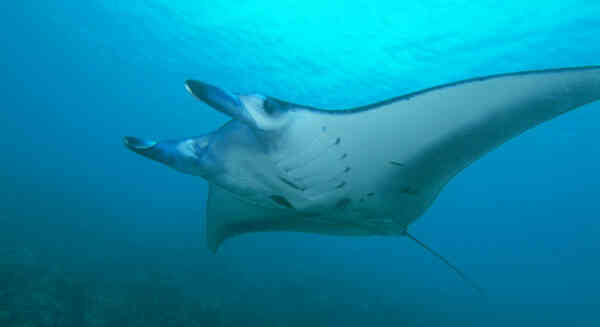Among all other inhabitants of the seas and oceans, stingrays are especially distinguished, mainly due to their unusualness. Looking at how they flutter in the water column, one immediately remembers the birds, which are also at ease in the air. However, most stingrays prefer to stay near the bottom, looking for food for themselves, and in order to admire them, divers have to track them down for a long time. But not all stingrays are harmless! Some of them can be very dangerous, although they do not attack people first – defending themselves, they can even kill a person carelessly approaching them.
Interesting facts about stingrays
- From the point of view of zoologists, stingrays belong to cartilaginous fish.
- They are found in all seas and oceans without exception.
- Different types of stingrays also live perfectly in cold Arctic waters with a temperature of 1.5 -2 degrees Celsius, and in the hot tropics, where the water warms up to +30.
- Most rays usually keep shallow water, but they were found at a depth of up to 2700 meters.
- It is the rays that are the closest relatives of sharks (interesting facts about sharks).
- Some stingrays live in tropical rivers, although most of them live in salt water.
- The body length of a stingray can vary from a few centimeters to 3-6 meters.
- The maximum mass of a stingray, officially registered, reached 2.5 tons.
- The largest stingray is the manta, or sea devil. It is named so because of the presence of head fins, which are rolled into a tube and protrude forward like horns.
- The well-known sawfish also belongs to the rays.
- Most stingrays live on the bottom, and only a few of them swim freely in the water column. The latter include the aforementioned manta rays, as well as stingrays.
- Electric rays attack opponents with a discharge of current from 30 to 220-230 volts and a force of over 30 amperes. Such an electric shock can easily paralyze a person.
- Most stingrays feed on bottom animals, in particular, worms, mollusks and various crustaceans (interesting facts about crustaceans)
- Some stingrays have electric organs on the sides of their bodies, and stingrays have spikes on their tails equipped with a poisonous gland.
- Stingrays pose a great danger to humans. Their venom can easily kill even a physically strong and healthy man.
- Manta ray fry are exact reduced copies of their parents.
- Among the rays there are oviparous, viviparous and ovoviviparous.
- The skin of stingrays can be either bare or covered with coarse spikes.
- In some countries, egg capsules of stingrays, which are called “mermaid purses”, are eaten.
- Stingrays are even found in the Sea of Azov, the shallowest and warmest on Earth (interesting facts about the Sea of Azov).
- In Korea, stingrays are eaten in the form of hwa (raw), and the dish with them is called “hongohwe chhomuchhim”.
- The hilts of expensive Japanese swords were once covered with stingray leather.
- Some species of stingrays do not gather prey on the seabed, but actively hunt fish.
